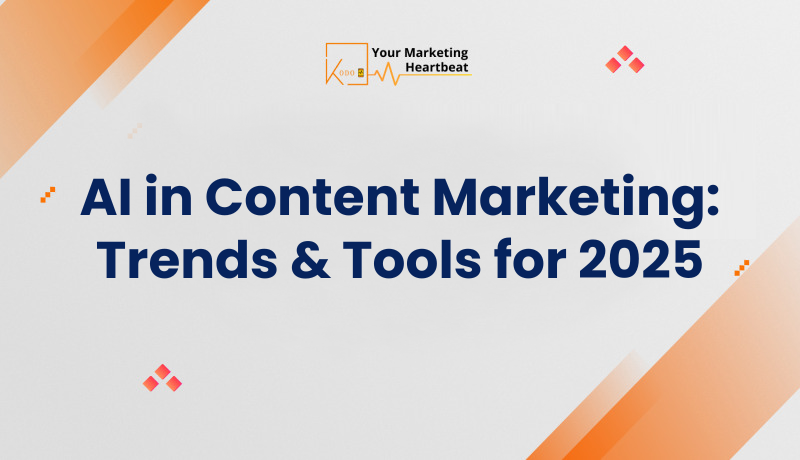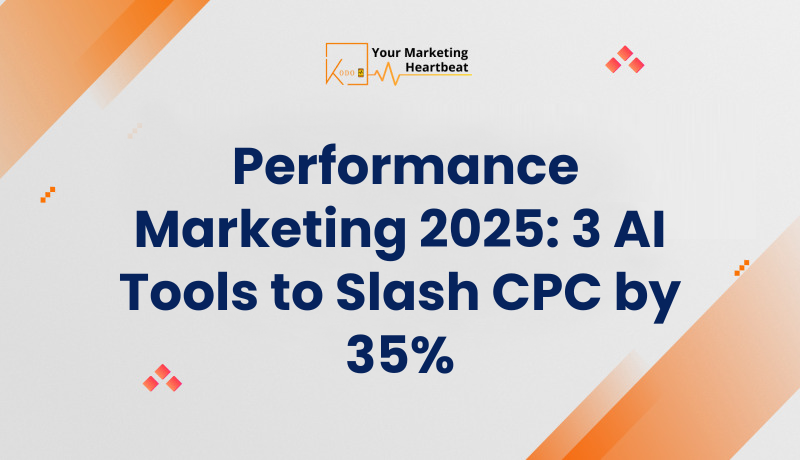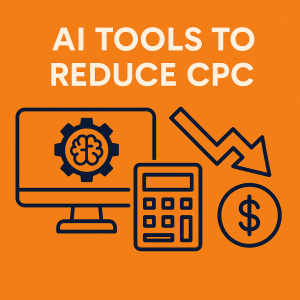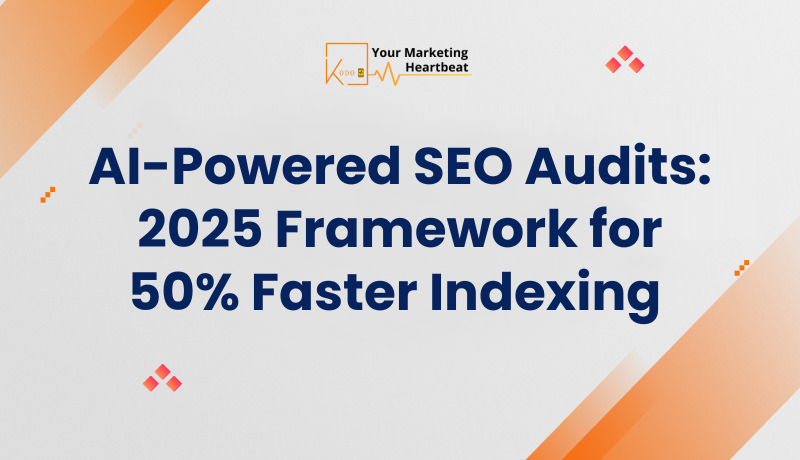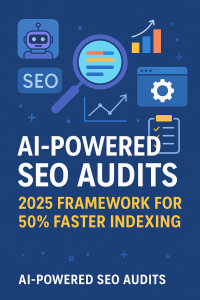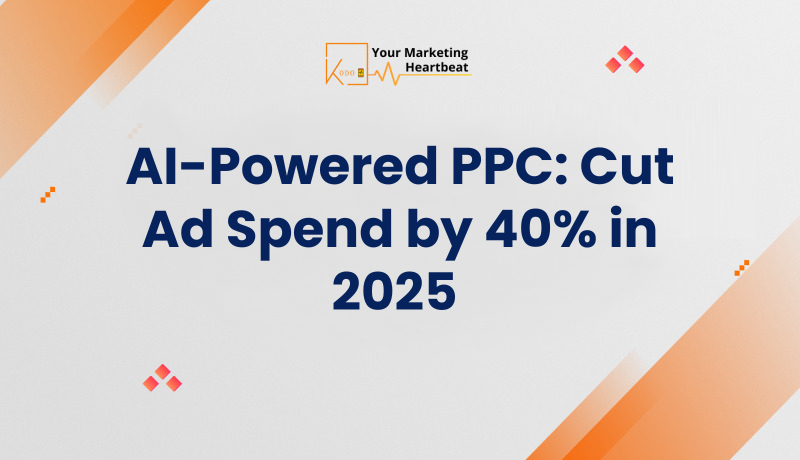
AI-Powered PPC: Cut Ad Spend by 40% in 2025

Table of Contents
- The Evolution of PPC Advertising
- Understanding AI-Powered PPC
- The Promise of 40% Ad Spend Reduction
- Key Performance Marketing Trends for 2025
- Leveraging Predictive Analytics in PPC
- Mastering ROAS Optimization
- Combating Ad Fatigue with AI Solutions
- Conclusion
The digital marketing landscape is undergoing a seismic shift, with artificial intelligence (AI) at the forefront of this transformation. As we approach 2025, integrating AI into Pay-Per-Click (PPC) advertising promises to revolutionize how businesses approach their digital marketing strategies. This article delves into the exciting world of AI-powered PPC and explores how it can potentially slash ad spend by a staggering 40% while boosting campaign effectiveness.
The Evolution of PPC Advertising
PPC advertising has come a long way since its inception in the late 1990s. From simple keyword targeting to sophisticated audience segmentation, the journey has been marked by continuous innovation. However, the advent of AI is set to catapult PPC into a new era of efficiency and effectiveness.
In the early days, marketers relied heavily on manual keyword research and bid management. This approach, while groundbreaking at the time, was time-consuming and often led to suboptimal results. As technology advanced, we saw the introduction of automated bidding strategies and basic machine learning algorithms. These improvements allowed for more dynamic campaign management, but still left room for human error and inefficiencies.
Now, as we stand on the cusp of 2025, AI is poised to take center stage in PPC advertising. This shift represents more than just an incremental improvement; it’s a paradigm shift in how we approach digital advertising. AI-powered PPC promises to deliver unprecedented levels of personalization, automation, and optimization.
Consider this: in the past, optimizing a PPC campaign might have taken hours of manual work each week. With AI, these optimizations can happen in real-time, 24/7, without human intervention. This constant optimization ensures that your ads are always performing at their peak, regardless of market fluctuations or changing consumer behavior.
As we move towards 2025, we’re seeing AI become increasingly sophisticated in its ability to understand context and intent. This means that AI-powered PPC systems can go beyond simple keyword matching to truly understand what a user is looking for, even if they haven’t explicitly stated it in their search query.
Understanding AI-Powered PPC
AI-powered PPC represents a quantum leap in digital advertising technology. At its core, it leverages machine learning algorithms and neural networks to automate and optimize various aspects of PPC campaigns. But what exactly does this mean for marketers and businesses?

Firstly, AI-powered PPC systems can analyze vast amounts of data in real-time. This includes not just campaign performance metrics, but also external factors such as market trends, competitor activity, and even weather patterns. By processing this data, AI can make split-second decisions on bid adjustments, ad placements, and targeting options.
One of the key advantages of AI in PPC is its ability to learn and adapt. Unlike traditional PPC systems that rely on predefined rules, AI-powered systems can identify patterns and trends that humans might miss. For example, an AI system might notice that certain ads perform better on rainy days in specific geographic locations. It can then automatically adjust bids and ad placements to capitalize on this insight.
AI also excels at predictive analytics. By analyzing historical data and current trends, AI-powered PPC can forecast future performance with a high degree of accuracy. This allows marketers to make proactive decisions rather than reactive ones. For instance, if the AI predicts a surge in demand for a particular product category, it can automatically increase bids and adjust ad copy to capitalize on this opportunity before it even materializes.
AI’s role in ad creation is also worth noting. Advanced AI systems can now generate ad copy and even design visual elements based on performance data and brand guidelines. This not only saves time but can also lead to better-performing ads as the AI learns what resonates with different audience segments.
Furthermore, AI-powered PPC systems excel at cross-channel optimization. They can analyze how PPC campaigns interact with other marketing channels such as social media, email, and organic search. This holistic view allows for more effective budget allocation and ensures that all marketing efforts are working in harmony towards common goals.
As we look towards 2025, the capabilities of AI-powered PPC are expected to grow exponentially. We’re likely to see even more advanced natural language processing, allowing for more nuanced understanding of search queries and user intent. We may also see AI systems that can autonomously identify new market opportunities and suggest entirely new campaign strategies.
The Promise of 40% Ad Spend Reduction
The claim that AI-powered PPC can cut ad spend by 40% in 2025 is bold, but not without merit. This significant reduction is rooted in AI’s ability to optimize every aspect of PPC campaigns with unprecedented precision and efficiency. Let’s break down how this substantial cost-saving is achievable:
- Elimination of Wasted Spend: AI algorithms can identify and eliminate underperforming keywords, ad groups, and campaigns in real-time. Traditional PPC management often results in wasted spend on irrelevant clicks or low-converting traffic. AI can swiftly detect these inefficiencies and reallocate budget to higher-performing areas.
- Precision Targeting: By analyzing vast amounts of user data, AI can create hyper-targeted audience segments. This precision ensures that ads are shown only to users with the highest likelihood of conversion, significantly reducing spend on uninterested audiences.
- Dynamic Bid Optimization: AI-powered systems can adjust bids in real-time based on a multitude of factors including time of day, user device, location, and even individual user behavior. This dynamic approach ensures that you’re always bidding the optimal amount for each impression opportunity.
- Predictive Budget Allocation: Using advanced forecasting models, AI can predict future performance trends and allocate budget accordingly. This proactive approach prevents overspending during low-conversion periods and capitalizes on high-opportunity moments.
- Ad Fatigue Prevention: AI can detect early signs of ad fatigue and automatically rotate or refresh ad creatives. This maintains ad effectiveness over time, reducing the need for increased bids to maintain visibility.
- Cross-Channel Synergy: By optimizing across multiple channels simultaneously, AI can identify the most cost-effective mix of PPC, display, social, and other digital advertising channels. This holistic approach often leads to significant overall cost savings.
- Long-Tail Keyword Optimization: AI can identify and capitalize on long-tail keywords that human managers might overlook. These often have lower competition and cost, contributing to overall spend reduction.
To put this 40% reduction into perspective, consider a business currently spending $100,000 per month on PPC advertising. By implementing AI-powered PPC strategies, they could potentially reduce this to $60,000 while maintaining or even improving their results. Over a year, this translates to $480,000 in savings – a significant amount that could be reinvested into other areas of the business or used to further scale successful campaigns.
However, it’s important to note that achieving this level of cost reduction requires proper implementation and ongoing refinement of AI systems. The initial setup and training period may not immediately yield such dramatic results, but as the AI learns and adapts over time, the efficiency gains can be substantial.
As we approach 2025, the capabilities of AI in PPC are expected to advance even further. We may see even greater cost reductions as AI systems become more sophisticated in their ability to understand and predict consumer behavior, optimize ad placements, and create personalized ad experiences.
Key Performance Marketing Trends for 2025
As we look ahead to 2025, several key trends are shaping the future of performance marketing, particularly in the realm of AI-powered PPC. Understanding and leveraging these trends will be crucial for marketers aiming to stay ahead of the curve:
- Hyper-Personalization at Scale: AI will enable unprecedented levels of personalization in PPC campaigns. Ads will be tailored not just to broad demographic segments, but to individual users based on their real-time behavior, preferences, and even emotional states. This hyper-personalization will lead to higher engagement rates and more efficient ad spend.
- Voice Search Optimization: With the growing prevalence of voice-activated devices, optimizing PPC campaigns for voice search will become essential. AI will play a crucial role in understanding natural language queries and matching them with the most relevant ads.
- Visual Search Integration: AI-powered visual search capabilities will become more prominent in PPC advertising. Marketers will need to optimize their campaigns for image-based searches, using AI to analyze and match visual content with user queries.
- Predictive Intent Modeling: Advanced AI algorithms will go beyond historical data to predict future user intent. This will allow marketers to target users with relevant ads before they even begin their search, based on predictive models of their likely needs and behaviors.
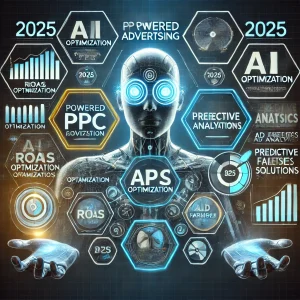
- Cross-Device Attribution: As users increasingly switch between multiple devices, AI will become crucial in tracking and attributing conversions across different platforms and touchpoints. This will lead to more accurate performance measurement and budget allocation.
- AI-Generated Creative Content: We’ll see a rise in AI-generated ad copy and even visual elements. AI will be able to create and test multiple ad variations in real-time, optimizing for the best-performing content.
- Augmented Reality (AR) Ads: AR technology will be integrated into PPC campaigns, allowing users to virtually interact with products before purchase. AI will play a key role in personalizing these AR experiences and measuring their effectiveness.
- Blockchain in PPC: Blockchain technology may be integrated into PPC systems to improve transparency, reduce fraud, and provide more accurate performance metrics. AI will work in tandem with blockchain to enhance security and trust in digital advertising.
These trends highlight the increasing sophistication and integration of AI in performance marketing. By 2025, successful PPC campaigns will likely be those that effectively leverage AI to create more personalized, predictive, and immersive advertising experiences while navigating the complex landscape of data privacy and ethical considerations.
Marketers who stay ahead of these trends and adapt their strategies accordingly will be well-positioned to capitalize on the evolving capabilities of AI-powered PPC, potentially achieving significant improvements in both efficiency and effectiveness of their digital advertising efforts.
Leveraging Predictive Analytics in PPC
Predictive analytics is set to become a cornerstone of AI-powered PPC strategies by 2025. This advanced application of AI goes beyond reactive optimization, allowing marketers to anticipate future trends and user behaviors. Here’s how predictive analytics is transforming PPC campaigns:
- Forecasting Campaign Performance: AI models can analyze historical data, current trends, and external factors to predict future campaign performance with high accuracy. This allows marketers to make proactive adjustments to their strategies, allocating resources more effectively.
- Anticipating Seasonal Trends: Predictive analytics can identify and forecast seasonal patterns in consumer behavior, enabling marketers to prepare and optimize their PPC campaigns well in advance of peak periods.
- Budget Optimization: By predicting future performance, AI can recommend optimal budget allocations across different campaigns, ad groups, and even individual keywords. This ensures that your ad spend is distributed in the most efficient manner possible.
- Bid Predictions: Advanced AI models can predict how bid changes will impact ad performance, allowing for more strategic bid management. This can help in maintaining optimal ad positions while controlling costs.
- Audience Behavior Prediction: Predictive analytics can forecast how different audience segments are likely to behave in the future, allowing for more targeted and effective ad placements.
- Keyword Trend Analysis: AI can predict which keywords are likely to become more popular or competitive in the near future, allowing marketers to adjust their strategies proactively.
- Conversion Rate Predictions: By analyzing user behavior patterns, AI can predict the likelihood of conversion for different user segments, enabling more precise targeting and bid adjustments.
- Ad Fatigue Forecasting: Predictive models can anticipate when ads are likely to experience fatigue, allowing for proactive creative refreshes to maintain engagement levels.
- Economic Trend Integration: AI models can incorporate broader economic trends and predictions into PPC forecasts, adjusting strategies based on anticipated market conditions.
- Weather-Based Performance Prediction: For businesses affected by weather conditions, AI can predict how different weather patterns might impact ad performance and adjust strategies accordingly.
- Device Usage Trend Prediction: AI can forecast shifts in device usage patterns, allowing marketers to optimize their campaigns for the most relevant platforms.
- Ad Format Effectiveness Prediction: Predictive models can anticipate which ad formats (text, image, video, etc.) are likely to perform best for different audience segments and contexts.
Implementing predictive analytics in PPC campaigns requires a sophisticated AI infrastructure capable of processing vast amounts of data and identifying complex patterns. Here are some key steps to leverage predictive analytics effectively:
- Data Integration: Ensure that your AI system has access to comprehensive, high-quality data from various sources, including historical campaign data, CRM data, and relevant external data sources.
- Model Selection and Training: Choose appropriate predictive models based on your specific needs and train them on your historical data. This may involve experimenting with different machine learning algorithms to find the most accurate predictors for your business.
- Continuous Learning: Set up your AI system to continuously learn and adapt its predictions based on new data and outcomes. This ensures that your predictive models remain accurate over time.
- Human Oversight: While AI can make powerful predictions, human expertise is still crucial in interpreting these predictions and making strategic decisions. Ensure that your team is trained to work effectively with AI-generated insights.
- Testing and Validation: Regularly test the accuracy of your predictive models and validate their results against actual outcomes. This helps in refining the models and ensuring their reliability.
- Scenario Planning: Use predictive analytics to run various “what-if” scenarios, helping you prepare for different potential outcomes and market conditions.
- Real-Time Integration: Implement systems that can act on predictive insights in real-time, automatically adjusting bids, budgets, and targeting based on forecasted performance.
By effectively leveraging predictive analytics, marketers can shift from a reactive to a proactive approach in PPC management. This not only helps in reducing wasted ad spend but also in identifying and capitalizing on opportunities before competitors do. As we move towards 2025, the ability to accurately predict and act on future trends will become a key differentiator in successful PPC strategies.
Mastering ROAS Optimization
Return on Ad Spend (ROAS) is a critical metric in PPC advertising, and AI is set to revolutionize how marketers optimize for this crucial KPI. By 2025, AI-powered ROAS optimization will likely become the norm, offering unprecedented levels of efficiency and effectiveness. Here’s how AI is transforming ROAS optimization:
- Dynamic ROAS Targeting: AI systems can set and adjust ROAS targets dynamically based on various factors such as product margins, inventory levels, and overall business goals. This ensures that your PPC campaigns are always aligned with your current business objectives.
- Predictive ROAS Modeling: Advanced AI algorithms can predict future ROAS for different ad placements, keywords, and audience segments. This allows for proactive optimization, shifting budget to areas likely to yield the highest return.
- Multi-Touch Attribution: AI can analyze complex customer journeys and attribute value to different touchpoints more accurately. This leads to a more nuanced understanding of ROAS across various stages of the funnel.
- Seasonal ROAS Predictions: AI can forecast seasonal ROAS trends and adjust strategies accordingly, ensuring optimal performance during peak periods and efficient spend during slower times.
- Cross-Channel ROAS Optimization: AI can analyze and optimize ROAS across multiple marketing channels simultaneously, ensuring a holistic approach to ad spend efficiency.
- ROAS-Driven Ad Creation: AI can generate and test multiple ad variations, optimizing for the creatives that drive the highest ROAS.
- Competitive ROAS Analysis: AI can analyze competitor strategies and market conditions to adjust ROAS targets and strategies dynamically.
- Long-Term Value Optimization: Beyond immediate ROAS, AI can optimize for customer lifetime value, balancing short-term returns with long-term customer profitability.
- ROAS Forecasting: AI can provide accurate ROAS forecasts, allowing marketers to set realistic goals and make informed strategic decisions.
- Automated ROAS Reporting: AI can generate detailed, actionable ROAS reports, highlighting key insights and recommending specific optimizations.
To master ROAS optimization with AI, consider the following strategies:
- Set Clear Business Objectives: Ensure that your AI system understands your overall business goals, not just marketing metrics. This might include factors like profit margins, inventory management, and customer acquisition costs.
- Implement Comprehensive Tracking: Ensure that your tracking setup captures all relevant data points, including post-click and post-view conversions, to give your AI system a complete picture of ad performance.
- Utilize Advanced Bidding Strategies: Leverage AI-powered bidding strategies that optimize for ROAS, such as target ROAS bidding in Google Ads, but be prepared to fine-tune these based on your specific business needs.
- Integrate CRM Data: Connect your CRM system with your PPC platforms to allow AI to optimize based on actual customer value, not just immediate conversion data.
- Experiment with AI-Driven Creatives: Use AI tools to generate and test multiple ad variations quickly, optimizing for the best-performing creatives in terms of ROAS.
- Implement Dynamic Pricing: For e-commerce businesses, consider using AI to adjust product prices dynamically based on ROAS performance and market conditions.
- Focus on Quality Score: Use AI to continuously optimize your quality scores, as higher quality scores can lead to lower CPCs and thus better ROAS.
- Leverage Predictive Analytics: Use AI-powered predictive analytics to forecast ROAS for different scenarios and adjust your strategies proactively.
- Automate Bid Adjustments: Set up automated rules and scripts that allow your AI system to make real-time bid adjustments based on ROAS performance.
- Continuous Learning and Optimization: Ensure your AI system is set up for continuous learning, constantly refining its ROAS optimization strategies based on new data and outcomes.
By mastering AI-powered ROAS optimization, marketers can achieve a level of efficiency and effectiveness in their PPC campaigns that was previously impossible. As we move towards 2025, the ability to leverage AI for sophisticated ROAS optimization will likely become a key competitive advantage in the digital advertising landscape.
Combating Ad Fatigue with AI Solutions
Ad fatigue, the phenomenon where audience engagement declines as they become overexposed to the same ads, is a persistent challenge in PPC advertising. By 2025, AI-powered solutions are expected to offer sophisticated approaches to combat ad fatigue, ensuring sustained campaign performance. Here’s how AI is revolutionizing the fight against ad fatigue:
- Dynamic Creative Optimization (DCO): AI-powered DCO can automatically generate and test thousands of ad variations, continuously refreshing creatives to maintain audience interest. By 2025, these systems will likely be able to create highly personalized ads in real-time based on user data and context.
- Predictive Fatigue Analysis: Advanced AI algorithms can predict when specific ads or campaigns are likely to experience fatigue before it actually occurs. This allows for proactive creative refreshes and strategy adjustments.
- Audience Segmentation for Ad Exposure: AI can segment audiences based on their exposure levels to specific ads, ensuring that individuals don’t see the same ad too frequently across different platforms and campaigns.
- Cross-Channel Frequency Capping: AI systems can implement sophisticated frequency capping across multiple channels and devices, preventing overexposure while maintaining optimal reach.
- Contextual Ad Serving: AI can analyze the context in which ads are served (website content, user behavior, time of day, etc.) and adjust the creative accordingly, reducing fatigue by ensuring ads always feel relevant and fresh.
- Emotional Response Tracking: Advanced AI may be able to analyze user emotional responses to ads through various signals (cursor movements, time spent, engagement patterns) and adjust ad serving to maintain positive emotional engagement.
- Adaptive Messaging: AI can adjust ad messaging based on the user’s stage in the customer journey, ensuring that the content remains relevant and engaging over time.
- Competitive Ad Analysis: AI can analyze competitor ads and adjust your creative strategy to maintain distinctiveness and reduce perceived ad fatigue in the market.
- Seasonal and Trend-Based Adjustments: AI can automatically adjust ad creatives based on seasonal trends, current events, or emerging cultural phenomena to keep content fresh and relevant.
- Predictive Creative Performance: AI can predict how different creative elements will perform over time, allowing for strategic rotation of ad components to maintain engagement.
To effectively combat ad fatigue using AI solutions, consider the following strategies:
- Diverse Creative Inputs: Provide your AI system with a wide range of creative elements (images, videos, copy variations) to work with. The more diverse the inputs, the more varied and engaging the output can be.
- Continuous Content Creation: Implement a system for ongoing creation of new ad elements that can be fed into your AI-powered DCO system.
- Granular Audience Segmentation: Use AI to create and continuously refine highly specific audience segments, allowing for more targeted and varied ad experiences.
- Cross-Platform Integration: Ensure your AI system has visibility across all your advertising platforms to implement truly holistic frequency capping and creative optimization.
- Performance Feedback Loops: Set up robust feedback mechanisms that allow your AI system to quickly learn from ad performance and adjust strategies in real-time.
- Contextual Relevance Mapping: Use AI to create detailed maps of contextual relevance, ensuring ads are not just fresh but also highly pertinent to the user’s current context.
- Emotional Impact Analysis: Implement AI-powered tools that can analyze the emotional impact of your ads and adjust strategies to maintain positive engagement.
- Dynamic Storytelling: Develop a framework for AI-driven storytelling that can adapt narratives based on user interactions and journey stage.
- Competitive Intelligence Integration: Feed competitive ad data into your AI system to ensure your ads remain distinctive in the market.
- User-Centric Metrics: Define and track user-centric metrics beyond just clicks and conversions, such as engagement time, repeat views, and cross-channel interactions.
By leveraging these AI-powered solutions and strategies, marketers can significantly mitigate the impact of ad fatigue, ensuring that their PPC campaigns remain effective and engaging over time. As we approach 2025, the ability to maintain ad freshness and relevance through AI will likely become a critical factor in sustained PPC success.
Conclusion
AI-powered PPC is transforming performance marketing by making ad campaigns smarter, more efficient, and cost-effective. By leveraging predictive analytics, ROAS optimization, and ad fatigue solutions, businesses can significantly reduce ad spend while maximizing conversions. As AI continues to evolve, marketers who embrace automation and data-driven decision-making will gain a competitive edge in 2025 and beyond.
Now is the time to integrate AI-driven PPC strategies into your campaigns and stay ahead of the curve. Ready to cut ad costs and boost ROI? Start optimizing today!
